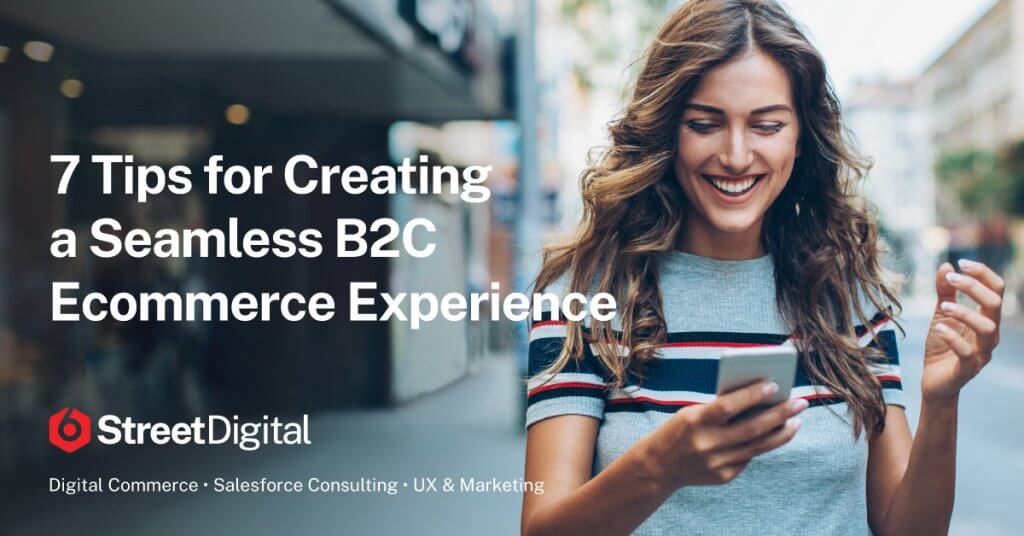Are you looking to create a seamless eCommerce experience for your customers? In today’s digital age, eCommerce has become increasingly popular. Thus, making providing customers with a smooth and hassle-free experience more critical.
A seamless eCommerce experience can lead to increased customer satisfaction and loyalty. This ultimately leads to higher conversion rates. To create a seamless eCommerce experience, businesses can follow several best practices.
This article will share seven tips for creating a seamless B2C eCommerce experience.
By following these eCommerce tips, you can improve the customer experience. Please keep reading to discover precisely what they are.
1. Know Your Audience In B2C eCommerce
Knowing your audience is the first step in creating a seamless B2C eCommerce experience.
Understanding your target market helps tailor your eCommerce strategy to their preferences. For example, if your target audience is primarily young adults, you may want to focus on social media marketing.
Personalizing the customer experience is also crucial in creating a seamless eCommerce experience. Use customer data to provide personalized product recommendations and offers.
2. Simplify the Checkout Process
The checkout process can make or break a customer’s experience on your website. A complicated checkout process can lead to shopping cart abandonment. Thus, ultimately resulting in lost sales.
Streamlining the checkout process by removing unnecessary steps is essential. Providing multiple payment options can create a seamless experience for your customers.
For example, offering to save payment information helps customers complete their purchases quickly. This engages your repeat clients in the long-term.
3. Optimize Your Website for Mobile
With the rise of smartphones, customers are using their mobile devices to buy online. A mobile-friendly website is essential to ensure a seamless customer experience.
Responsive design is critical in creating a mobile-friendly website. A website with a responsive design adjusts to fit the screen size of the device being used. Customers can easily navigate and view your website on their mobile devices.
Mobile-friendly navigation and search bars are crucial features to enhance the mobile experience. Customers should be able to find what they are looking for easily. They must navigate the website with ease on their mobile devices.
4. Enhance Your Product Pages
Your product pages are where customers make their purchasing decisions.
Providing high-quality product images and detailed product descriptions helps customers. User-generated content, such as reviews, can enhance the customer’s experience on your website.
Including multiple product images from different perspectives can help customers visualize the product.
Detailed product descriptions provide customers with all the necessary information about the product. User-generated content, such as reviews, can provide social proof, influencing purchasing decisions.
5. Provide Excellent Customer Support
Customers expect top-notch customer support when shopping online. Providing excellent customer support is crucial in creating a seamless eCommerce experience.
Offering multiple support channels such as email, phone, and live chat is a great solution. It allows customers to reach out to you in their preferred method. By providing a variety of support channels, you can cater to their preferences.
Responding to customer inquiries efficiently is essential. It will show that you value their time and business.
Responding promptly to customer inquiries shows that you prioritize their needs. It helps show you are committed to providing exceptional customer service.
Implementing a user-friendly return policy can also increase customer satisfaction and loyalty. Customers want to feel confident in their purchases. A transparent and fair return policy can help reassure them.
By making returns easy and hassle-free, you can build trust with your customers. You can increase their loyalty to your brand.
6. Use Social Media to Your Advantage
Integrating social media into your eCommerce strategy can help create a brand presence. This will increase customer engagement with the help of B2C tools.
By regularly posting updates on social media, businesses can keep their customers engaged.
Social media also provides a platform for businesses to engage with customers personally. Thus, creating a sense of community and brand loyalty.
By responding to customer comments, companies can show that they value their customers. It helps show they are committed to providing exceptional customer service.
In addition to community building, businesses can use social for customer service. Addressing customer concerns efficiently through social media can help companies to build trust. Ultimately leading to greater credibility with their customers.
7. Leverage Data and Analytics
Analyzing data can help businesses make informed decisions about their eCommerce strategy. For example, if a product category is not performing well, analyzing the data can help companies. It will let them identify the issue and make necessary adjustments to improve sales.
Personalization is another crucial aspect of creating a seamless eCommerce experience. Using data to personalize the customer experience can increase customer satisfaction and loyalty.
For example, using customer data to provide personalized product recommendations. The same can be done for offers and it is a great idea. It can help businesses increase sales and improve the customer experience.
In addition to tracking customer behavior, businesses can use analytics to measure strategy. Metrics such as conversion rates and average order value can help companies.
It will let them understand how their website is performing. It will also identify areas for improvement.
B2C eCommerce Made Simple
Creating a seamless eCommerce experience requires understanding your audience. It also necessitates simplifying the checkout process and optimizing your website for mobile.
You need to enhance your product pages and provide excellent customer support. You must also use social media to your advantage, and leverage data and analytics. These are just some of the B2C tips to enhance the client experience.
Continuous improvement and adaptation are essential in ensuring your eCommerce strategy is practical. By implementing these tips, you can create a seamless B2C eCommerce experience.
Get in touch with us if you’d like to take your eCommerce to the next leve.
